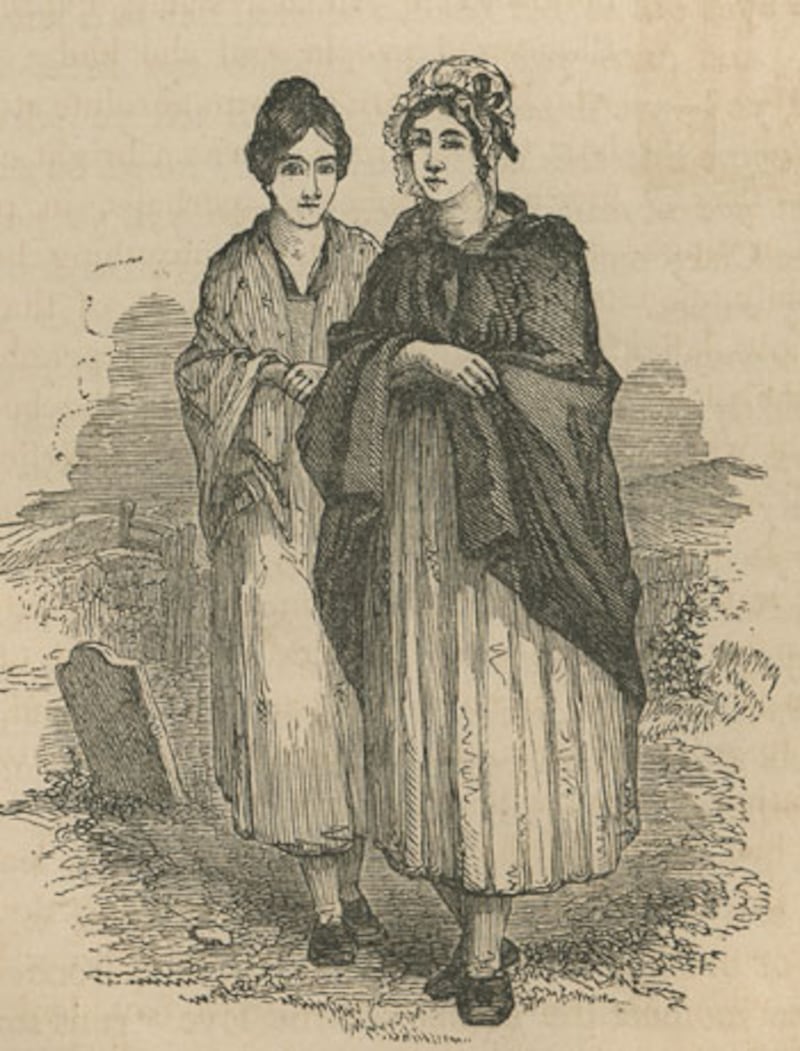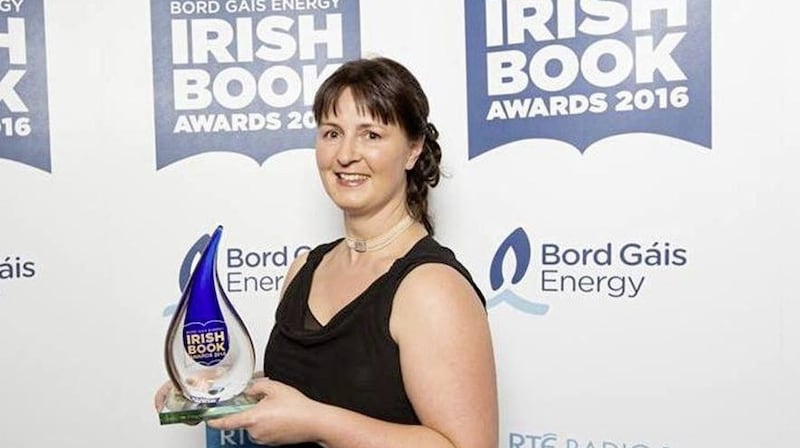From the moment I first heard the words Curragh Wren, I was hooked. My fascination with the women known as the Wrens began by chance. In 2012, to celebrate the 200th anniversary of my new hometown of Newbridge, Co Kildare, I set off on a tour focused upon the town’s military history. I’d always known that Newbridge was a garrison town. But I had no idea of the seedier side of that history.
The guided walk took in the quartermaster’s house, the officers’ chapel, the “watering-gates” where hundreds of horses stood every day drinking the cold crisp waters of the River Liffey. And the area of town once known as the She-barracks.
The historian paused briefly and reminded us here’s where the she-barracks stood. Everyone else nodded and either tutted or grinned sheepishly, but I had no idea what the phrase meant. And when I found out, I was heartbroken that during the 60 minutes dedicated to the history of the British army in Newbridge, the women had merited only one sentence.

The Curragh Wrens lived life on the margins of society. As the Great Hunger, or what is usually called the Irish Potato Famine, stalked through Ireland, reducing its population by a quarter in just five years, filling the graveyards and the emigrant ships, the phenomenon of the Wren women was born. Destitute, starving, incapable of producing the milk to keep the baby alive, or desperately seeking the soldier who had once whispered kind words into her ear, women travelled to the Curragh of Kildare. Scratching out tiny shelters in the soil, roofed by the thick furze bushes which grow abundantly on the Curragh plain, the women resembled nothing so much as the wren birds which shared their feeble shelters. Used and abused by the common soldiery and the commissioned officers, the landed gentry and even royalty, the wren women were considered the lowest of the low. Even the slightly less desperate prostituted women who plied their trade indoors, in the She-barracks district within the town, looked down upon the outdoor prostitutes.
And there were wren women all over Ireland, I discovered. Every garrison town had its collection of desperate women, camp-followers and their children. The reason we know slightly more about the Curragh Wrens is because they were the focus of attention within the British press in the 1860s and their stories were written down, however inaccurately, however filtered through a lens of Victorian misogyny and morality.
In the decades directly after the famine, their infamy spread. Ostracised, feared, despised. Banned from the local towns and subject to violence, persecution and torment, the women developed their own society of outcasts, a co-operative, communal way of life, where every penny, every task, every joy and sorrow, was equally shared.
I plunged into the story of the Curragh Wrens; in song, and art, poetry and prose, but the majority of the scholarly and fictional writings on the Wren women have focused on the period of the 1860s, and draw heavily upon the newspaper reports of James Greenwood, published in the Pall Mall Gazette. Of the decades before that there is little known.
I circled around the story of the Wren women for a couple of years, seeking a way in. I wasn’t a writer when I first learned their tragic stories. I was a reader and I sought out and studied everything I could find about the women. I didn’t think there was much that I, as a non-writer, could add to the story set in the 1860s.

I hadn’t written a paragraph since GCSE English classes back in the 1980s. I practiced my writing skills on a subject I felt more familiar with: stories set in the rural farming landscape and dialect of my childhood home in Ulster. After many false starts and rejections, Sowilo Press in Philadelphia published my first collection The Accidental Wife, and one of those stories, The Visit, won the Irish Book Awards short story of the year in 2016. But I still had no idea how to do justice to the Wrens.
Inspiration struck in the local history section of Hodges Figgis. By chance I picked up two books from the Maynooth University Local History series: Catherine Fleming’s The Transportation of Women from Kildare to van Diemen’s Land, and Ciarán Reilly’s John Plunkett Joly and the Great Famine. Everything fell into place, and I had my opening, my route into the exploration of the Wren women’s struggle for survival; through crime, prostitution, forced marriage, emigration, and their simple refusal to die. By the time I reached the cash register, I knew the arc of the novel.
Inspired by true events, the tales of real Irish women and girls weave throughout the novel in a blend of fact and fiction. Acts of desperation, betrayal, courage and love, both real and imagined, lead my characters out of the furze bushes of the Curragh.
Since publication last year by Red Stag Press, many readers have complimented me on my astute timing, and I just smile. The Flight of the Wren has a dual timeline – one set in 1849, and the second in Tasmania (van Diemen’s Land) in 1919. The fact that we are in the centenary commemoration year of the Spanish flu, which features in the novel, and the 170th anniversary of the end of the Famine-period is a lucky coincidence, rather than the result of my genius. If I, in my innocence, had had any idea when I began writing The Flight of the Wren in 2014, that it would take four years to find a publisher, I probably would never have started. Without an agent or mentor, the submission process was a nightmare, but I couldn’t give up. My women travelled to the other end of the world to survive, I couldn’t give up on them.
After 70 rejections, (and some successes; the novel won a place at the ILFD Date with an Agent 2015, the Greenbean Novel Fair 2016, and won the Cecil Day Lewis emerging writer award from Kildare Arts Service in 2016) Red Stag bought the rights in early 2018. And the rest, as they say, is history.
The Flight of the Wren by Orla McAlinden is published by Red Stag Press, at €14.99 flightofthewren.com orlamcalinden.com mentorbooks.ie










